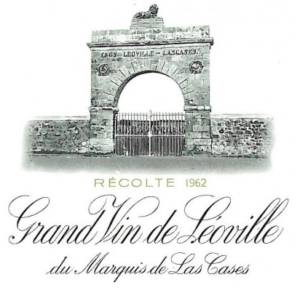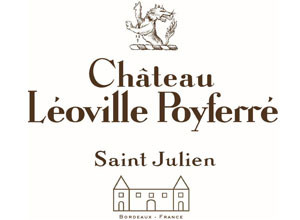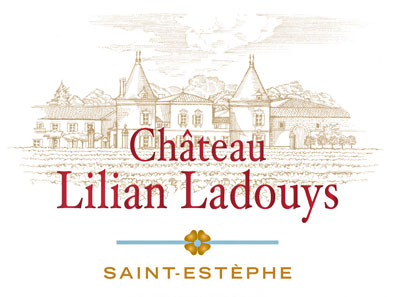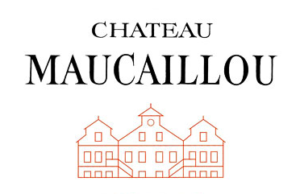Château Léoville Barton
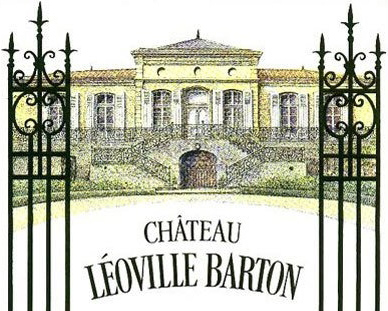
The Estate
1722 – Thomas Barton left his native Ireland to settle in Bordeaux, founding a wine merchant company. 1826 – His grandson, Hugh Barton, purchased 50 hectares of vines located in the Saint Julien appellation. In the historic 1855 classification the château was to be awarded the rank of “Second Classified Growth”. The property was managed by the various generations over the years until Anthony Barton raised Château Léoville Barton to the level of international recognition it enjoys today. The Barton story continues with his daughter, Lilian, and her two children, now writing the chapter of the 10th generation.

Château Léoville Barton Saint-Julien Grand Cru Classé
Terroir: The vineyard nestles in the heart of the St Julien terroir among the most beautiful slopes of Garonne gravel, facing the Gironde river. The clayey gravel subsoil allows excellent growing conditions whatever weather the vintage brings.
Viticulture: The plowing is traditional, without weeding or herbicide.
Grape Varieties: Cabernet Sauvignon (74%), Merlot (23%) and Cabernet Franc (3%)
Vinification: The harvesting is done entirely by hand. After the de-stemming, the berries are carefully sorted, crushed and poured in wooden vats thermo-regulated, according to their plots. The alcoholic fermentation lasts from 7 to 10 days and the extraction is always respectful of the juice by adjusting the number of pumping depending on the cuvées and the vintages. The maceration is about 3 weeks then the juice is drawn in barrels, lot by lot.
Aging: The wine is aged between 16 and 18 months in French oak barrels of which 60% are brand new, in a cellar maintained at 15 °. The wines are topped up 3 times a week to avoid any contact between the wine and the air, the racking is traditional using the so-called “à l’esquive” method.
1999 Reviews: “A powerful nose, with sweet tobacco and sultana, follows through to a full body, featuring ultrafine tannins and a long, long finish, as well as lovely texture.” – 91pts, Wine Spectator
Château Léoville-Las-Cases
History
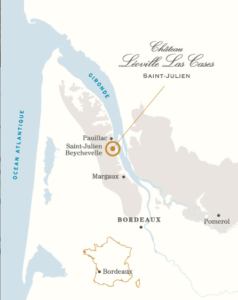
One of the oldest Medoc estates, Domaine de Léoville belonged to some of the wealthiest and most influential noble French families before it was acquired by the Las Cases family. The estate was split up between 1826 and 1840 as a result of the French Revolution. (Expropriation of emigrants’ property and constitution of egalitarian redistribution). Château Léoville Las Cases was created, thanks to a kind of birthright, from 3/5 of the original estate and the heart of the domain.
The Grand Vin’s current terroir has therefore been at the historic heart of the original terroir since the 17th century. Pierre Jean, Adolphe and Gabriel de Las Cases were successive heirs to the property until 1900, when Théophile Skawinski purchased a share in the estate and became its manager. Léoville Las Cases has now been managed by the same family since the late 19th century and is today represented by Jean-Hubert Delon, sole owner of the Château and proprietor of Château Potensac in the Medoc and Château Nénin in Pomerol.
Terroir
The Clos encases a terroir of very great complexity. It is mainly composed of Quaternary gravel (“graves”) over gravelly sand and gravelly clay subsoils. We also find clays which are variably deep and compact, but which sometimes break through to the surface. The proximity of the Gironde River has created the wide diversity of soils, formed over various geological periods by successive superimpositions.
The river also creates a special microclimate that enables very early ripening of the grapes and protects the vineyards from frost. This cameo of geological combinations influences the growth of the vine and the composition of the grapes: regular but restricted water supply and a very low intake of nutrients bring out the best in the great Cabernet Sauvignons and Cabernet Francs which usually achieve their full potential whatever the vintage. The incomparable terroir gives this great wine its unique personality.
THE VINEYARD CHARACTERISTICS 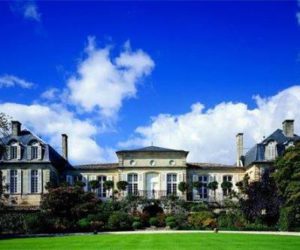
AOC: Saint-Julien
Surface area: 98 ha
Average age of vines: 40 years
Grape varieties: Cabernet Sauvignon 66% / Merlot 24% / Cabernet Franc 9% / Petit Verdot 1%
Density of plantation: 8 600 plants/ha
The largest plot of Léoville-Las Cases’ vineyards, known as the Grand Clos, is located on the northern boundary of St-Julien, with only the Juillac tributary separating its vineyards from those of Château Latour in Pauillac.
A the vineyard area in total extends 97 hectares (240 acres) planted with a grape variety distribution of 65% Cabernet Sauvignon, 19% Merlot, 13% Cabernet Franc and 3% Petit Verdot. The vineyard underwent major replanting during the 1950s, and today the vines average 30 years of age.
Léoville-Las Cases produces two wines, its grand vin, and a second wine called Clos du Marquis that has been in production since 1902.
Grapes are harvested by hand, crushed and then may be fermented in temperature controlled wood, concrete, or stainless steel vats of varying size depending on the style of the vintage. Léoville-Las Cases also employs a state of the art reverse osmosis machine to help extract excess water from the grape must in a rainy vintage. Use of this machine is considered legal, but highly controversial, and while Léoville-Las Cases is not the only estate to employ this technique, few estates admit to their use. After processing and fermentation, the wine is transferred into oak barrels for 18–20 months of aging before being fined with egg whites and bottled.
The average annual production is 180,000 to 200,000 bottles for the Grand Vin, and 250,000 to 270,000 bottles for the second wine, Clos du Marquis.

Château Léoville-Las Cases Saint-Julien
Overview: The Grand Vin is the product of exceptional terroirs from the former Léoville estate. These terroirs are located mainly in the Clos Léoville Las Cases, which you pass as you leave Saint- Julien village for Pauillac. They extend over nearly 60ha producing Cabernet Sauvignons and Cabernet Francs with a complex, polished expression and characteristics which are totally unique to the Grand Vin of Léoville du Marquis de Las Cases and have been widely recognized for years.
Terroir: Mainly composed of Quaternary gravel (“graves”) over gravelly sand and gravelly clay subsoils. The proximity of the Gironde River has created the wide diversity of soils, formed over various geological periods by successive superimpositions. The river also creates a special microclimate that enables very early ripening of the grapes and protects the vineyards from frost.
AOC: Saint-Julien
Surface Area: 55 ha
Average Age of the Vines: 52 years
Grape Varieties: Cabernet Sauvignon 61% / Merlot 21% / Cabernet Franc 16%
Plantation Density: 8,600 plants/ha
2008 Reviews:”…boasting extraordinarily sweet tannin as well as abundant black cherry and cassis notes intermixed with a prominent underlying minerality. Despite the massive density, concentration, and length, the wine is extremely precise, nuanced, and impeccably pure.” –97pts, Wine Advocate
2005 Reviews: “This is breathtaking. Black in color, with incredible aromas of crushed blackberry, mineral, licorice and lead pencil. Full-bodied, with a mind-blowing texture of seamless tannins that coat every millimeter of the palate. Goes on and on, with licorice, currant and flowers. Time will tell if it’s better than the 2000. Best after 2017. 20,000 cases made.”-100pts, Wine Spectator
1999 Reviews: “Full ruby-red. Captivating nose of roasted currant, cedar and minerals, with a floral lift; quite fresh for the year. Sweet, supple, dense and full, with no dip in the middle. This is impressively chewy and concentrated for a ’99. Finishes long and flavorful, with sweet, building tannins.”-92pts, Vinous
1997 Reviews: “A star of the vintage, this classy, cedary, black currant, and sweet cherry-scented, dense ruby-colored Las Cases exhibits a beautiful dosage of new oak, medium body, expansive, ripe, concentrated flavors, plenty of glycerin, and exceptional purity. It is low in acidity, and already delicious.”-90pts, Wine Advocate
1983 Reviews: “Dark ruby core…Cassis/cedery nose is still tight but very classy. Smooth velvety structure, med/full bodied. Very concentrated with silky smooth tannins. Still youthful – a brilliant wine for the vintage…Excellent.” – 94pts, WinePages.com

Le Petit Lion du Marquis de Las Cases
Overview: In recent years, several vineyards in Léoville-Las Cases were uprooted and replanted, and these are now coming into production. To preserve the quality level of the Grand Vin, the winemakers decided to create a second wine, beginning with the 2007 vintage. The Petit Lion shares the philosophy of its two elder siblings; it is vinified and aged in order to preserve its fresh, ripe fruit flavor throughout its life. However, it is designed as a second wine, and is therefore made to be more accessible and for earlier drinking, with a significant proportion of Merlot used in the blend.
Grape Varieties: Cabernet Sauvignon, Merlot, Cabernet Franc, Petit Verdot
Tasting Notes: Very ripe, luscious, full-bodied red with expressive flavours – ripe blackberries, hint of dark chocolate, plums. Highly ambitious wine that will require some bottle age to tame the dense tannins, which currently overpower the fruit.
2009 Reviews: “Currants on toasted bread character on the nose and palate. Medium- to full-bodied, with chewy tannins and a medium finish. Balanced and attractive. This is the new name for the second wine.” – 91pts, Wine Spectator

Clos du Marquis
Overview: The name of this wine, created at the beginning of the 20th century when the vineyard was planted, was inspired by the Petit Clos adjacent to the Château de Léoville, residence of the Marquis de Las Cases. Clos du Marquis is a historical brand by the Domaines Delon, a separate vineyard to Leoville Las Cases whose first vintage was released in 1902.
The creation of this brand was to allow a clear identification of two completely distinct terroirs. The situation remains unchanged today as the vineyard producing the Clos du Marquis is located on top terroirs of the Saint Julien appellation, surrounded by such prestigious Classified Growths as Léoville Poyferré and Léoville Barton.
Terroir: The Clos du Marquis vineyard is 500 meters west of the famous walled enclosure of Léoville Las Cases known as the ‘Enclos’. It is made up of quaternary gravel that is older and finer than the Enclos gravel. The presence of organic matter in the top soil, due to the presence of a forest on this land in the past, brings a typical Saint-Julien style to the Clos du Marquis. The grapes ripen later in this vineyard than in the Enclos, the latter being warmed by the micro-climate of the nearby Gironde river. The vineyard, planted on the Saint-Julien plateau, 20 meters above sea level, is composed of humic podzol over sandy-clay gravel. The Clos du Marquis terroir is characterized by a greater regularity in the soil types as well as a higher hydrological sensitivity than the Enclos.
AOC: Saint-Julien
Surface Area: 45 hectares (111 acres)
Average Age of the Vines: 35 years
Grape Varieties: Cabernet Sauvignon 67 % / Merlot 32 % / Cabernet Franc 1 %
Plantation Density: 8,700 plants / hectare
2015 Reviews: “…a pure and harmonious bouquet with blackberry, sous-bois and subtle tobacco aromas that gently unfold in the glass. The palate is medium-bodied with supple tannin in the mouth, a keen line of acidity, fine precision here with a mineral-rich finish that exudes terroir expression. This is a great Clos du Marquis from Jean-Hubert Delon and his team, a Clos du Marquis with swagger.”-93pts, Wine Advocate
2007 Reviews: “Definite tannins here, a wine that shows ripe fruits, richness and a solid core. It is not huge, but does have structure, bitter chocolate, sweetness.” – 91pts, Wine Enthusiast

La Petite Marquise du Clos du Marquis
Overview: As the younger vines came into production on the Clos du Marquis vineyard and with the aim of preserving its unanimously recognized quality, the winemakers decided to create a second wine. La Petite Marquise is an affectionate nickname given by the Marquis de Las Cases to his little daughter, and adopted by Mr. Delon for his own daughter. La Petite Marquise is, above all, a tribute to all the women who have brought their feminine touch to the history of the estate over the centuries.
Grape Varieties: Cabernet Sauvignon, Merlot
Tasting Notes: Produced from grapes grown on the superb Clos du Marquis terroir, La Petite Marquise shows great subtlety and refinement. With its harmonious expression and delicate tannic structure, this wine is elegantly seductive and enchanting. To be enjoyed relatively young due to the high percentage of Merlot in the blend.
2016 Reviews: “The 2016 La Petite Marquise is a precise, beautifully delineated Saint-Julien. Sweet tobacco, cedar, menthol, and licorice add aromatic nuance to a core of red cherry/plum fruit in this mid-weight, super-expressive wine. Above all else, though, I find a sense of finesse to the 2016 that is compelling. Tasted two times.” – 91pts, Vinous
Château Léoville-Poyferré
The Estate
Château Léoville Poyferré, Second Classified Growth in 1855, is a family-owned estate situated in the prestigious Appellation d’Origine Contrôlée of Saint-Julien in the Médoc. The vineyard stretches over 80 hectares.
The Vines
The vineyard is planted with 65% Cabernet Sauvignon (35 hectares), 25% Merlot (17 hectares), 8% Petit Verdot and 2% Cabernet Franc (together 11 hectares), at a density of 8,500 vines per hectare. In the vineyard, the vines are encouraged to root deeply by an annual working over of the soil to a depth of 50 cm in alternate rows. The vineyard work is largely manual, with early removal of unnecessary shoots, control of yields by debudding and green harvesting, leaf stripping to improve aeration and fruit exposure, hand-pruning and hand-harvesting. The result of all this work is a yield typically in the order of 45-50 hl/ha.
The Soil
The soil is a Garonne gravel. The terroir of Saint-Julien is different because it contains an array of soil types. The vines benefit from this diversity because the nutrients that are absorbed by the plants are more diverse, giving the resulting wine added complexity. The drainage potential of these gravelly soils is optimized, thanks to the sculpting of the knolls and slopes through many years of erosion.
Vinification
The wines are fermented in the 35 temperature-controlled stainless-steel vats of varying sizes, then macerated for three to four weeks, before selection is made. The grand vin is Château Léoville-Poyferré (20,000 cases per annum), which goes into barrels where malolactic fermentation occurs. Typically, the oak is now 75% new each year. Wines produced from the plots once belonging to the cru bourgeois estate Château Moulin Riche (17,000 cases per annum), are vinified completely in cuve, before being transferred into a mix of new and one-year-old barrels. All the wines see 18-20 months in oak, with racking every three months and an eventual fining with egg whites before bottling.

Château Léoville Poyferré Saint-Julien 2ème Cru Classé
Winemaker’s Notes: “The vine is an extraordinary plant with the natural capacity to adapt to weather changes and rising temperatures. Since 2001, the beautiful Indian summers, along with the absence of rainfall during the equinoxes, have allowed the Cabernet Sauvignon to ripen perfectly. Is this Bordeaux’s answer to global warming ? Man’s work : careful mastery of the yields and rigorous selection at each step of the vine growing and winemaking processes have made this one of the most attractive vintages of the decade, on the level of the memorable 1982. After a cold, wet winter (488 mm of rainfall from November to March) the subsoil was well endowed with water. The spring was hot and humid but these high temperatures helped the vines to develop quickly. The flowering occurred mostly during a dry, hot period with ideal conditions for even development of the grapes. From May, temperatures were already reaching 31.4°C and the thermometer even showed 38.8° on 30th June. July was very hot and sunny except for the first 5 five days. The month of August and first two weeks of September were warm and dry, finishing off the vintage perfectly. The ever deeper root system of our vine plants allows them to get through periods of drought with no problem at all. The ripeness tests carried out from the 7th September gave very surprising results: high potential alcohol and acidity as well as a promising phenolic content. The de-leafing on the sunrise side and second generation bunch removal optimized the quality of the harvest. Welcome showers on 18th and 19th September added the final touch to this exceptional vintage.”
Varietal Blend: 60% Cabernet Sauvignon, 29% Merlot, 6% Petit Verdot, 5% Cabernet Franc
Production: 212,233 bottles
Tasting Notes: Deep, intense color. The nose is complex and elegant. Empyreumatic with black fruit and spicy notes. The attack is nice and frank, with great amplitude on the palate. Ripe, silky, elegant tannins on the finish. Smooth and opulent. Pleasantly lingering aromatic finish. 2009, a vintage full of sunshine.
2014 Reviews: “…very complex bouquet with blackberry, bilberry, crushed stone, cedar and hints of violet. It is extremely focused, intense rather than overtly powerful. The palate is medium-bodied with fine tannin, crisp and generous, conveying much more tension and precision than the Léoville Las-Cases…Outstanding.”-95pts, Vinous
2002 Reviews: “…exhibits a saturated ruby/purple color, high levels of tannin, and sweet, noble black currant fruit intermixed with some licorice, espresso roast, and pain grille…medium to full body, high levels of tannin, and good acidity in a more structured, classic style than the 2003.” – 90pts, Robert Parker
1995 Reviews: “Black licorice and currants on the nose. Very fragrant. Full-bodied, with chewy tannins and a long finish. Still needs time to come together.–’95/’96 Bordeaux retrospective. Best after 2008.”-92pts, Wine Spectator
1989 Reviews: “…outstanding. Dark ruby-colored center, verging on purple. Superripe aromas of cassis, berry and mint. Full-bodied, very sleek, with fine tannins and a long, long, caressing finish.” –90pts, Wine Spectator
Château Les Grands Chênes
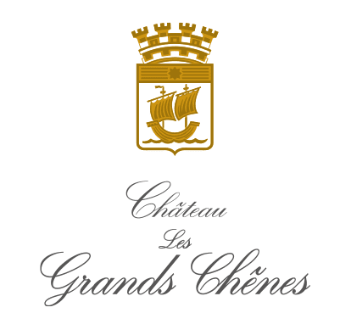

Médoc Cru Bourgeois
Overview: Today a rising star of the Médoc, Château Les Grands Chênes is sought-after by wine enthusiasts. The outstanding quality of its wine has won the plaudits of all the fine wine connoisseurs over more than twenty years. Classified as one of the top Médoc Cru Bourgeois growths more than ten years ago, Château Les Grands Chênes has continued to gain awards and win medals at the leading national and international wine challenges and to earn the recognition of the most prestigious wine guides.
Appellation: Médoc
Vinification: Transferred to small-sized temperature-controlled stainless steel vats. Average maceration time: 28 to 30 days; 16 months of ageing.
Grape variety: 70% Merlot, 29% Cabernet Sauvignon, 1% Cabernet Franc
Drinking Window: 2015 – 2028
Tasting notes: Sight: Deep garnet, with hints of mahogany and biscuit, signs of aging. The nose is complex, with notes of blackcurrant and plum appear in turn, followed by secondary aromas of spices, like cinnamon, and roasted notes of charred wood. Forthright flavor revealing the incredible finesse of well-rounded, perfectly balanced tannins. Roasted notes and ripe fruit on the palate. Balanced, full-bodied finish.
Château Les Martins
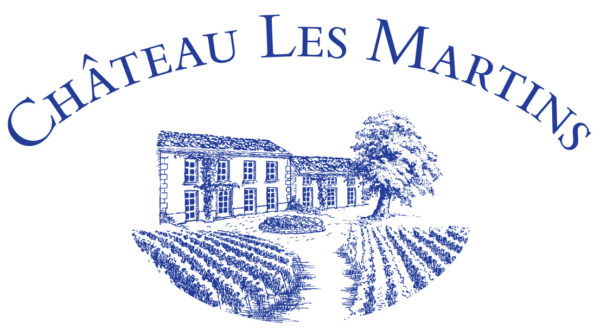
The Estate
Jean-Michel Bergeron is the owner of Château Les Martins and Château Haut La Valette, a family-owned property. Jean-Michel Bergeron’s son, already involved in the family business, will inherit the winemaking operation from his father.

Château les Martins Premières-Côtes-de-Blaye
Location: Château Les Martins is located near Blaye on a sunny, southern-facing slope.
Production Area: 22 hectares
Average Age of the Vines: 25 years old
Grape Varieties: 75% Merlot, 15% Cabernet Sauvignon, 10% Malbec
Vinification: Traditional wine-making in stainless steel vats with controlled temperatures
Tasting Notes: A blend of Merlot, Cabernet Sauvignon, and Malbec, Les Martins has a lovely, bright garnet color. The wine offers fresh, fruity aromas of gooseberries and cherries as well as a hint of spice. On the palate, it is soft and round with mellow tannins. This wine is flavorful and easy to drink on its own or as an accompaniment to many dishes.
Château Lilian Ladouys
The Estate
Established in the 18th century and family owned for generations, Chateau Lillian Ladouys was bought in recent years by a private investor who has invested heavily in both the vineyards and the winery. The modernisation has hugely benefitted the resulting wines and Lillian Ladouys is certainly one to watch – if the 2003 and 2005 vintages are anything to go by! Hearty, concentrated, and with fine tannin structure, the new wave of wines coming from this Chateau are fantastic examples of Saint-Estèphe claret.
The estate covers an area of 47 hectares spread in a slightly disparate fashion across the St Estèphe appellation, within sight of some prestigious neighbors such as Cos d’Estournel.

Château Lilian Ladouys Saint-Estèphe
Grape Varieties: 60% Cabernet Sauvignon, 35% Merlot and 5% Cabernet Franc (slight increase in Cabernet Sauvignon in recent years)
Average Age of the Vines: 40 years old
Soil: About 2/3 of the vineyard is situated on well drained soils rich in coarse gravel, with pebbles up to 8 cm across. The remaining vineyards are clay over a limestone bedrock.
Vinification: At harvest time, the fruit is sorted in the vineyard and on arrival at the chai, before fermentation by indigenous yeasts in temperature-controlled stainless-steel vats, regulated to 31-33ºC.
Aging: The young wine goes into oak barrels, of which 1/3 are new with each vintage, where malolactic occurs. The wine will remain here 16-18 months before an egg-white fining, filtration, and bottling.

La Devise de Lilian Saint-Estèphe
Overview: La Devise de Lilian has become a benchmark among second wines. Its flavorful style and its well-integrated tannins have won the hearts of those who love softness and richness. La Devise does not use strict plot definition, but is instead a true second wine, a genuine signature blend with Cabernet Sauvignon and Merlot at the forefront.
Grape Varieties: Cabernet Sauvignon, Merlot
Aging: La Devise is matured for an average of 12 months and is accessible in its youthful prime.
Tasting Notes: Fruity with a velvety structure, it pairs wonderfully with fresh cuisine such as white meat or fruity desserts.
Château Lynch-Bages
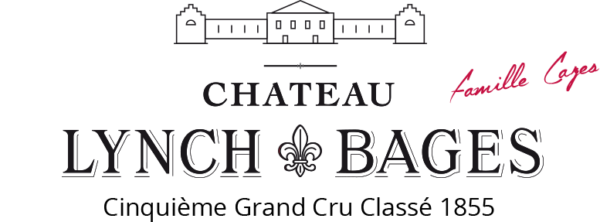
The Estate
The history of Lynch-Bages, situated in the lands of “Batges” at the entrance to Pauillac, is emblematic of the Médoc region. Although there are records of the Bages territory as far back as the 16th century, the history of wine production in the area really began in the 18th century. From 1749 to 1824, the vineyard was owned by Thomas Lynch, the son of an Irishman from Galway who worked as a merchant in Bordeaux. Thomas Lynch managed the land wisely and produced high quality wines under the name of ”Cru de Lynch”. As part of the prestigious 1855 Classification, for the Exposition Universelle de Paris, his wine would soon be classified as one of the fifth growths.
Later on, Jean ”Lou Janou” Cazes, a ”Montagnol” (a term used to describe farmers from the austere upper valleys of Ariège), came to the Médoc to earn a living. In the 1930’s, General Félix de Vial, a descendant of the Cayrou family, leased the vineyard to Jean-Charles Cazes, the son of ”Lou Janou” and a farmer at Château Ormes de Pez in Saint-Estèphe. Cazes went on to purchase both properties in the wake of World War II. Lynch-Bages has been run by the Cazes family ever since.
Lynch-Bages’ old vat-house represents a rare example of traditional winemaking equipment the Médoc area. Its slatted flooring which introduced the advantages of gravitational design now used in modern vat-houses, was invented by Skawinski in 1850. Back then, grapes were transported in a cart pulled by horses and then lifted by crane and emptied into a wooden tank on wheels and tracks. One or two winemakers inside the tank then crushed the grapes, making the juice flow out through openings into vats on either side. A rope-pulley-bucket system and no less than six workers were then required to remove the leftover grape skins from the fermentation vat.

Château Lynch-Bages Pauillac 5ème Grand Cru Classé
Appellation: Pauillac
Classification: Grand Cru Classé
Owner: Jean-Michel Cazes
Production Area: 90 hectares
Terroir: Garonne Gravel
Harvest: Hand-picked and sorted at the vineyard
Aging: French oak barrels for 15 months (70% new wood)
Grape Varieties: Cabernet Sauvignon, Merlot, Cabernet Franc, Petit Verdot
Tasting Notes: Exhibits wonderful dark cherry and leather notes. Medium bodied with well-integrated tannins and a nice earthy spice on the finish.

Echo de Lynch Bages
Overview: Château Haut-Bages Averous was the name of the former Pauillac estate acquired by André Cazes and was the domaine’s second wine from 1976 onwards. It was renamed Echo de Lynch-Bages as of the 2008 vintage in order to affirm its relationship with the Grand Cru Classé. Its name Echo refers to the nymph from Greek mythology who was deprived of speech by Hera as a punishment for distracting her when Zeus wished to consort with beautiful mortals. As such, although Echo de Lynch-Bages is not the first to speak, it shares the first wine’s elegance and character.
AOC: Pauillac
Production Area: 90 hectares
Soil: Garonne Gravel
Harvest: Hand-picked and sorted at the vineyard
Aging: French oak barrels during 12 months, in barrels used for one previous vintage.
Grape Varieties: Cabernet Sauvignon, Merlot
Tasting Notes: Like its big brother, Echo de Lynch-Bages displays the characteristic taste, aromas and length of Pauillac wines. As an echo of the first wine, it receives the same care and attention from the vine to the cellars. It is the result of a selection of Lynch-Bages’ youngest vines and specific plots which represent between 25 to 40 % of the harvest depending on the vintage. Echo de Lynch-Bages is round, soft and seductive in its youth with outstanding potential for bottle age.

Blanc de Lynch Bages
Overview: Born in 1990, Lynch-Bages White is made from a blend of the Bordeaux appellation’s 3 traditional white grape varieties, planted on 8 of the Pauillac estate’s parcels. Increased precision in the selection process since 2006 as well as preventing oxidation to the fruit before pressing contribute to the harmonious aging of the wine.
AOC: Bordeaux
Production Area: 5.5 hectares
Soil: Garonne Gravel
Harvest: Hand-picked and sorted at the vineyard
Aging: Regular stirring of the lees on oak barrels for 6 months (50% new oak)
Grape Varieties: Sauvignon Blanc, Sémillon, Muscadelle (percentages vary depending on the vintage)
Tasting Notes: A fresh blend of the three traditional grape varieties. Aromas of fresh and exotic fruits from Sauvignon Blanc, dried and candied fruits and white flowers from Sémillon and delicate woody and vanilla notes from Muscadelle come together to make this complex Lynch-Bages White. The palate balances freshness and strength with a round, ample yet elegant structure. Characteristic of fine Bordeaux whites, Lynch-Bages White is lively and explosive in its early youth and retains impressive length on the palate for the duration of its life.
Château Lynch-Moussas

The Estate
The history of the Château dates back to 1610 when Domaine de Moussas-Bages belonged to the family of Jehan, wine merchant and owner of several estates. In 1728, Domaine de Moussas-Bages was bought by the Drouillard family. In 1748, Thomas Lynch inherited the estate from his wife, Elisabeth Drouillard, and renamed it Chateau Lynch. In 1779, Jean-Baptiste Lynch, Mayor of the city of Bordeaux in 1808, Earl of the Empire in 1811, then Peer of France in 1815, inherited the Château and entrusted its management to his brother, Michel Lynch, Chevalier and Mayor of Pauillac. When Jean-Baptiste Lynch died in 1835, Château Lynch was divided into two properties: Lynch-Moussas (Moussas being located on the locality called Moussas) and Lynch-Bages (located on the place called Bages).
In 1847, Château Lynch-Moussas was bought by a family of Spanish wine merchants, the Vasquez family. In 1855, the Chateau became 5th Grand Cru Classé of the Médoc.
In 1919, Jean Castéja, owner of Château Duhart-Milon, 4th Grand Cru Classé in Pauillac, Pichon-Longueville Baron, 2nd Grand Cru Classé in Pauillac, and Doisy-Védrines, 2nd Grand Cru Classé of Sauternes and Barsac, bought Château Lynch-Moussas. At that time, the property spanned more than 250 hectares, including 120 hectares of vineyards, forest, and pasture. At the end of the 1960s, the sons of Jean Castéja, Pierre, Émile, Jean, and Édouard Castéja decided to share family assets.
In 1970, Emile Castéja, married to Denise Borie and father of Chantal Preben Hansen and Philippe Castéja, took the reins of the Château. From a property whose surface vineyards had reduced to less than 10 hectares, Emile Castéja replanted the entire vineyard to reach 60 hectares. He modernized the Château to restore its luster, then the cellar to have a better winemaking facility. After this renovation, the Château was again recognized for the quality of its wine.
In the 2000s, Philippe Castéja took over and intensified the changes and modernizations with the arrival of Denis Dubourdieu and his team. It was during the 2001 vintage that Émile and Philippe Castéja launched the second wine of Château Lynch-Moussas, Les Hauts de Lynch-Moussas, from the younger plots. On June 21, 2019, it will be 100 years since the Castéja family owned and managed Château Lynch-Moussas.

Château Lynch-Moussas Pauillac 5ème Grand Cru Classé
Location: The vineyards of Lynch-Moussas are situated in Pauillac, contiguous to a number of other Grands Crus Classés including parcels belonging to Castles Latour, Lynch-Bages, Pichon-Longueville Baron, Grand-Puy-Lacoste and of course Batailley, which shows the quality of the soils and its production.
Grape Varieties: 75% Cabernet Sauvignon, 25% Merlot (percentages vary depending on the vintage)
Production Area: 62 hectares
Soil: Gravelly Günzian soil composed of pebbles and gravel cemented by clay sands.
Average Age of Vines: 35 years
Annual Production: 220,000 bottles per year
Harvest: Manually done. The final sorting takes place on the sorting table; this way, only the very best grapes arrive in the vat.
Vinification: Fermentation in temperature-controlled stainless steel vats, with subsequent malolactic fermentation in the same vessel.
Aging: 14-18 months in oak barrels (50% new wood). The wines are fined with egg whites but not filtered before bottling.
Tasting Notes: The wines of Lynch-Moussas are today well known for their deep and dark color, their red-fruity nose. They are round with ripe tannins, followed by the typical hints of blackcurrant of the prestigious wines of Pauillac. These full-bodied wines have a significant length on the finish.
2017 Reviews: “Barrel Sample. This is a bright, fruity wine, with attractive tannins and plenty of black currant and spice flavors. It shows great medium-term aging potential. Drink from 2022.” – 92pts, Wine Enthusiast

Les Hauts de Lynch-Moussas Haut-Médoc
Overview: Since 2001, the team of Chateau Lynch-Moussas has cultivated a plot located on the hill overlooking the Chateau to the south. This parcel, located in the Haut-Médoc appellation, is made up mostly of young vines and mainly planted with Cabernet Sauvignon. It is used to produce the 2nd wine of the Chateau, Les Hauts de Lynch-Moussas. This parcel is worked in the same way as the entire vineyard located in the Pauillac appellation.
Soil: Gravel and sand
Average Age of the Vines: 25 years old
Grape Varieties: 75% Cabernet Sauvignon, 25% Merlot (percentages vary depending on the vintage)
Vinification: Light and short pumping over. Alcoholic fermentation from 24-26 ° in the juice, then increase to 31° for maceration. Maceration lasts an average of 4 weeks.
Yield: 44 hL
Tasting Notes: An intense ruby color, fruity and roasted nose, with round and fine tannins, and a lingering finish. Assembled with parcels of Haut-Médoc and Pauillac declassed, this wine is a very typical Pauillac. Elegant and structured, it offers a very expressive aromatic palette with notes of raspberries, cherries, and coffee after a little aging.
2015 Reviews: “Sweet start. Rather polished and fun for early drinking. Very flattering!”-16.5/20, Jancis Robinson
Château Malartic-Lagravière
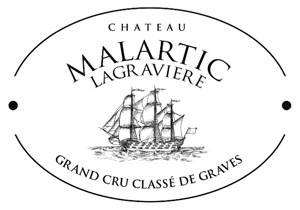
The Estate
Domaine de Lagravière, recognized since time immemorial for its excellent terroir, was purchased at the end of the eighteenth century by the family of Count Hippolyte de Maurès de Malartic. Serving the armies of the Kings of France, this Admiral fought against the English on the many seas of the world, showing special bravery in 1756 during the battle of Quebec. The estate was then bought in 1850 by Madame Arnaud Ricard, who added the name Malartic to that of Lagravière as a tribute to the former owners. After land reorganization and the acquisition of some small plots, the estate took on the form which it was to keep until the 1950s. The Marly family were the last of the Ricard ancestry to run the Château. Of particular note, Jacques Marly was estate manager from 1947 to 1990. Having enjoyed an excellent reputation from the beginning of the nineteenth century, Château Malartic-Lagravière was one of only six properties in Bordeaux to enter the 1953 Graves classification for both its red and white wines. At the end of 1996, the Château entered a new era with the arrival of the Bonnie family.

La Réserve de Malartic Pessac-Léognan
Overview: This is the second wine of Château Malartic-Lagravière
Production Area: 53 hectares
Terroir: Dry gravel and clay; subsoil of limestone with veins of clay
Grape Varietals: 45% Merlot, 45% Cabernet Sauvignon, 8% Cabernet Franc, 2% Petit Verdot (percentages change depending on the vintage)
Plantation Density: 10,000 vines/hectare
Training System: Double guyot
Yield: 43 hl/ha
Viticulture: Sustainable
Harvest: Manual
Vinification: In small, truncated, thermo-regulated wooden and stainless steel tanks for 28-30 days.
Aging: Traditionally done in French oak barrels for 15 months
Consultant: Michel Rolland
Tasting Notes: Beautiful, deep red color with glints of violet. Fine intensity on the nose, pleasantly complex, with red fruit, floral, smoky, toasted, and mineral notes. On the palate, it is mellow, smooth, and well-rounded with good volume. The same aromatic profile develops as in the nose, with fruity, toasted, smoky, slightly minerally notes. Plump tannins with good length and pleasant complexity. A charming, enjoyable wine that offers a good representation of the appellation and the terroir.
2015 Reviews:
“This is more open on the nose than the 2016, and extremely generous in its fruit structure. It’s loaded with brambles and cassis, even if a little more heat is evident through the palate. This has a lovely gourmet touch with caramel edging, and if you’re looking for a wine to drink soon, this is the one to go for.” – 90pts, Decanter
2014 Reviews:
Château Margaux
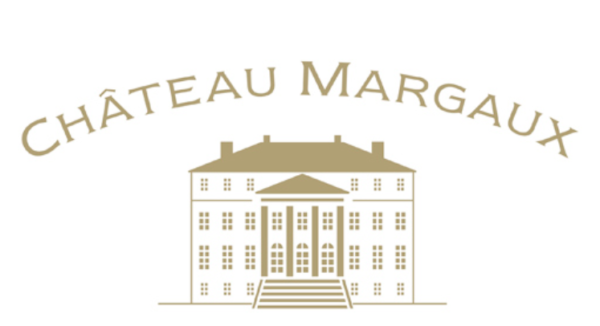 History
History
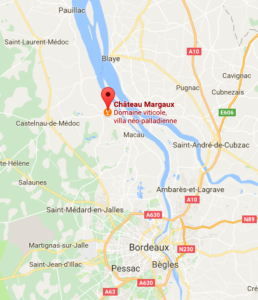
Known since the XII century, it was called “La Mothe de Margaux” and, at that time, it didn’t have any vines. The successive owners of “La Mothe de Margaux” were, of course, important lords but we had to wait for the arrival of the Lestonnac family to set up the estate as we know it today. Pierre de Lestonnac succeeded, in the ten years from 1572 to 1582, in completely restructuring the property as well as the vineyard and anticipated the general evolution of the Médoc that had started to abandon cereal growing in favour of vines. At the end of the XVII century, Château Margaux occupied 265 hectares, land that wouldn’t be divided again. A third of the estate was dedicated to vines, which is still the case today.
Empereur Napoléon III paid an important service to the great red wines of the Médoc by organising in Paris, in 1855, the Second Universal Exhibition. It was an occasion for him to glorify French products, among which were the prestigious Médoc wines. He wanted the wines to be presented in the form of a classification. A blind tasting was organised in Paris which led to this official classification of 1855. It divided about sixty Médoc growths, and a property in the Graves, into five quality levels. Four growths were classified “Premier Grand Cru Classé”; only Margaux was marked twenty out of twenty. This classification, which maintains its validity today, confirmed the qualitative hierarchy illustrated by the great price differences that had been practiced on the world market for a long time.
Fernand Ginestet and his son Pierre came on the scene. Fernand had made his fortune in wine trading. It was one of his friends, the Mayor of Saigon, and a wine importer who sent him the funds necessary to buy the estate. The Ginestet family acquired the whole property in about 1950. Fernand and Pierre patiently reorganised the vineyard. Pierre’s son, Bernard, looked after their trading business and developed one of the most respected wine trade establishments in Bordeaux. But the recession of the 1970s and the disastrous unsaleable vintages of 1972, 1973 and 1974 placed Pierre and Bernard in a desperate situation; nevertheless, they wanted to honour their commitments.
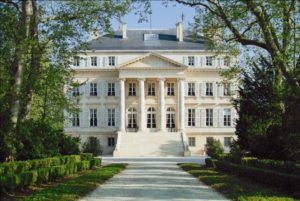 Their only negotiable asset was Château Margaux that they resigned themselves to selling. It took two years for Pierre and Bernard Ginestet to sell Château Margaux and when André Mentzelopoulos bought the property in 1977, the wine world was astounded. Whatever next? A Greek in the Médoc ? The wine world that was so alarmed by the arrival of a “Hellene in the Médoc”, redoubled its concerns on the death of André Mentzelopoulos. This paradox is explained in reality by the fact that André Mentzelopoulos had convinced even the most pessimistic doubters by his energy and clear vision that, put into the service of his passion for Château Margaux, had, with almost spectacular speed, re-established the quality of the wine and the reputation of the estate.
Their only negotiable asset was Château Margaux that they resigned themselves to selling. It took two years for Pierre and Bernard Ginestet to sell Château Margaux and when André Mentzelopoulos bought the property in 1977, the wine world was astounded. Whatever next? A Greek in the Médoc ? The wine world that was so alarmed by the arrival of a “Hellene in the Médoc”, redoubled its concerns on the death of André Mentzelopoulos. This paradox is explained in reality by the fact that André Mentzelopoulos had convinced even the most pessimistic doubters by his energy and clear vision that, put into the service of his passion for Château Margaux, had, with almost spectacular speed, re-established the quality of the wine and the reputation of the estate.
His daughter, Corinne Mentzelopoulos, was immediately ready for the challenge. On the death of her father she was already established in the family group as management controller at Primistères, the company that manages the Félix Potin company. Surrounded by the team that her father had chosen, she followed the investment defined by the latter, so that Margaux was ready to take up another challenge, that of the extraordinary explosion in worldwide demand for Bordeaux wines from 1982. The Americans were the first to get enthusiastic for the classified first growths, quickly joined by the more traditional connoisseurs in Great Britain and Germany, followed by the Japanese, enthusiasts in Hong Kong or Singapore, the Russians, the Chinese, the Indians, the Brazilians….
Bordeaux has been blessed with a succession of great vintages with the true pinnacle of success being the 2009 and the 2010. At the same time, the Félix Potin company was transformed, the stores and the property were given up, and the group – from now on Exor – became the majority shareholder in Perrier at the time the world market leader for mineral water. So, Corinne Mentzelopoulos decided to find support in the development of a group which it seemed unwise to manage alone. At the beginning of the 1990s, Corinne Mentzelopoulos found an associate in the Agnelli family, then directed by Gianni Agnelli, the president of Fiat. This association lasted about ten years and, in 2003, when the Agnelli Group decided to dispose of the Château Margaux shares, Corinne Mentzelopoulos bought them immediately thereby becoming the only shareholder in the estate.
The Terroir
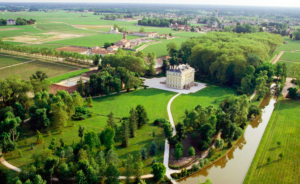 Terroir is a concept so French that the word doesn’t have an equivalent in any other language. Terroir is a genetic heritage of great wines. Without it, nothing is possible, however its character is only truly revealed as a result of the work and determination of men.
Terroir is a concept so French that the word doesn’t have an equivalent in any other language. Terroir is a genetic heritage of great wines. Without it, nothing is possible, however its character is only truly revealed as a result of the work and determination of men.
In fact, without this passionate work and attention of men, a mound of gravel would never become as “privileged” as a great vineyard. It has been necessary to choose the best adapted grape varietals, define their growing conditions and refine the vinification and ageing techniques. This work has been going on for nearly five hundred years. Among the factors that make up the terroir of the great growths are first and foremost, the natural conditions, the soil and the climate. It’s the climate that permits vine cultivation and, under certain conditions, enables the grapes to ripen harmoniously. On these privileged sites, where ripening is necessarily slow and uncertain, slight variations in the soil becomes very important, even between two neighbouring plots and can translate into great differences in quality and particularity. For the most part, the mechanisms of these interactions are not well known but the acceptance that they exist is clear.
Planting density: 10,000/Ha
« The problem presented by parasites, insects and spiders is complex in a different way. In the nineteen eighties we questioned all of our vineyard protection policy with the objective of finding an alternative method to chemicals to preserve the balance of the spider and insect populations. After a few years of work, we were able to stabilise the situation. Since then, all these populations cohabit and autoregulate themselves without us having to take any action, or only in an organic way. At the end of the nineteen nineties, sexual confusion was developed in order to stop the grape worms reproducing. Not one insecticide is now used in our vineyards. »

Château Margaux 1er Grand Cru Classé
Overview: Since the 17th century, the first wine of Château Margaux has been recognized as being one of the greatest wines in the entire world. It owes its unique qualities to the genius of its terroir as well as to the passionate work of a succession of generations. It’s a remarkable wine that comes from a combination of characteristics that are only rarely found: finesse, elegance, complexity, density, intensity, length and freshness. Although its tannic concentration may be exceptional, it’s rare to detect astringency.
The great vintages are distinguished by their formidable ability to move us. The lesser vintages give pleasure to wise enthusiasts. They offer the advantage of evolving very rapidly and, reveal, after a few years, instead of power, this subtlety that is the prerogative of great terroirs.
Château Margaux has an extraordinary ability to evolve. Over the years, it has developed a finesse, an aromatic complexity and a remarkable presence on the palate.
Grape Varieties: Cabernet Sauvignon, Merlot, Petit Verdot, and Cabernet Franc (percentages change depending on the vintage)
Vinification: Fermentation in oak barrels.
Aging: 18 to 24 months in new oak barrels. Fining with egg-white.
Annual Production: 130,000 bottles

Pavillon Rouge du Château Margaux
Overview: The production of a second wine probably goes back to the beginning of the XVII century because it is inseparable from the search for excellence which started at that time. Sold under the name of “Château Margaux 2nd wine”, it took its permanent name of Pavillon Rouge du Château Margaux in 1908. After an eclipse between the thirties and the mid-seventies, its production restarted on the arrival of André Mentzelopoulos in 1977 and at first greatly increased in order to improve the quality of the first wine. From the mid – 1990s, the creation of a third wine in its turn, allowed for a more and more rigorous selection for Pavillon Rouge. For a few years now, a third of the harvest has gone into the first wine, barely 30% into the Pavillon Rouge, and the remainder is divided between the third and fourth wines.
The quality of Pavillon Rouge has become very close to that of the first wine because all the plots involved contributed to the blending of Château Margaux not so long ago. Of course there isn’t the same complexity, the same depth, the same “magic” but the flavors are close and the balance in the mouth leads to the same subtle senses of power and softness. In general it is ready to drink a little earlier whilst retaining an excellent potential to age largely beyond 30 or 40 years.
Grape Varieties: Cabernet Sauvignon, Merlot, Petit Verdot, and Cabernet Franc (percentages change depending on the vintage)
Vinification: Fermentation in oak barrels.
Aging: 18 to 24 months in new oak barrels. Fining with egg-white.
Annual Production: About 100,000 bottles
Château Marquis de Terme

The Estate
Located in the heart of Margaux appellation, the ancient origins of the estate date back to the XVth century, but it’s name was given by François de Péguilhan, Marquis de Terme, in 1762. The Sénéclauze family, the owner since 1935, contributes to Château Marquis de Terme’s development.

La Couronne de Marquis de Terme Margaux
Overview: La Couronne de Marquis de Terme is the second wine of the estate.
Appellation: Margaux
Production Area: 39.5 hectares
Terroir: Gravel typical of Margaux, made of quartz and quartzite, at least 4 metres thick, where the Cabernet Sauvignon realizes its best potential. Locally the deep gravel is more clayish, which is better suited to Merlot.
Grape Varietals: 60% Cabernet Sauvignon, 33% Merlot, 7% Petit Verdot
Plantation Density: 10,000 roots / 2.5 hectares
Average Age of the Vines: 35 years old
Viticulture: Plot by plot selection. Sustainable vineyard management – respect for the environmental balance.
Harvest: Harvest by hand with sorting both in the vineyard and the cellar.
Vinification: Filling of barrels via gravity, without pumping. Vinification in thermo-regulated concrete vats.
Aging: 16 to 18 months in French oak barrels, with 50% new barrels.
Serving Temperature: 16-18°C
Decanting: Put the wine in a decanter between 15 min and 1 hour before serving
Cellaring Potential: 5-7 years
Food Pairings: Tapas, grilled steak
Château Maucaillou
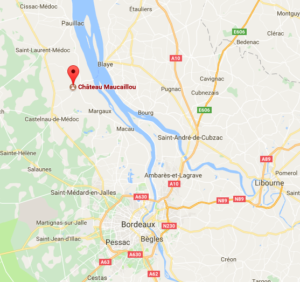
History
In 1875, the year of his marriage, J. Petit-Laroche offered his wife the construction of a fine residence opposite his Médoc cellars as a wedding gift. The result was the Chtaeau as we know it today. The Chateau MAUCAILLOU building is listed in the “BORDEAUX CHÂTEAUX” inventory collection. At the same time, J. Petit-Laroche created a new wine estate in the localities known as “MAUCAILLOU” and “CAUBET”, with an area of one and a half hectares, named Chateau MAUCAILLOU. “MAUCAILLOU” means “mauvais cailloux”, the French for bad stone, as the term was understood by the farmers of the middle ages, given that this type of gravel plot was not suitable for growing cereal, the main source of livelihood at the time. It was later discovered that such gravel outcrops constituted an ideal terroir for highly expressive vineyards.
In 1929, Roger and André DOURTHE purchased CAVES ET ENTREPOTS DE MOULIS (Moulis Cellars and Warehouses), located next to the railway station at Moulis-en-Médoc, to ensure easier shipment of wines throughout France and Europe. They concomitantly became the owners of Chateau MAUCAILLOU (2.5 hectares, with half of the vineyard in red varieties and the other half in white varieties). In 2006, Pascal DOURTHE became the manager of Chateau MAUCAILLOU, supported by his two sisters, Caroline and Magali.
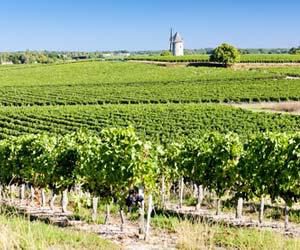
The Terroir
The MOULIS vineyard is the oldest in the Médoc, with traces found in title deeds dating back to the 15th and 16th centuries. The terroirs on which the 63 hectares of Château MAUCAILLOU vineyards grow consist of fine quaternary alluvium outcrops, a large part of which stems from the Güntz Garonne gravel stratum, at the origin of the Great Classified Crus of the Médoc. This gravel, with its big shiny stones, reflects the rays of the summer sun onto the grapes, thereby enhancing their perfect ripeness, an essential condition for the birth of a great wine.
Grape varieties : 50% Cabernet Sauvignon, 41% Merlot, 7% Petit Verdot, 2% Cabernet Franc
The harvest is often mixed, partly by hand and partly by machine, depending on plots, plant health and weather conditions. The grapes are first sorted in the vineyard. The harvest is then taken to the fermentation cellar in small bins to avoid crushing the grapes during transport.
Vinification
Vinification is carefully undertaken under the watchful eye of Philippe DOURTHE, graduate oenologist, in two modern vat rooms equipped with state-of-the-art technology. The vat room, in stainless steel, is entirely thermoregulated in order to apply the specific method that Philippe DOURTHE developed in 1982. It consists of vinifying at relatively low temperature over the first few days, in order to extract the quintessence of the fruit aromas of the grape, then, at the end of fermentation, letting the temperature rise to extract the finest tannins and the colour.
At MAUCAILLOU, malolactic fermentation follows immediately after alcoholic fermentation.
Château Maucaillou wines are aged in barrels for 18 to 20 months.
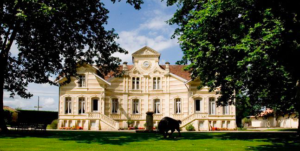 In keeping with the finest tradition, nowadays respected in only the very greatest growths, the wines are aged in carefully selected new oak barrels. Philippe DOURTHE wrote his oenology thesis on the origin and characteristics of oak in the world. It is also one of his passions.
In keeping with the finest tradition, nowadays respected in only the very greatest growths, the wines are aged in carefully selected new oak barrels. Philippe DOURTHE wrote his oenology thesis on the origin and characteristics of oak in the world. It is also one of his passions.
50 to 75% of the barrels are replaced by new oak for each harvest, depending on the vintage and on its capacity to handle more or less tannins from new oak of essentially French origin. Two large and fully insulated barrel ageing cellars, with a total capacity of 3,500 barrels, safely keep the first-year harvest, on the one hand, and the second-year harvest, on the other hand. During the two years of ageing, the wines are regularly racked, then fined with egg whites to ensure perfect clarity.
The average production of each harvest is 27,000 cases (324,000 bottles) of the first wine, and 9,000 cases (102,000 bottles) of the second wine (N°2 de MAUCAILLOU).

Château Maucaillou Moulis-en-Médoc
Production Area: 87 hectares
Soil: 80% Güntz gravel, 20% Clay-limestone
Average Age of the Vines: 30 years old
Varietal Blend: 52% Cabernet Sauvignon, 41% Merlot, 7% Petit Verdot
Annual Production: 27,000 cases
Aging: Aged in 40-75% new wood barrels for approximately 18 months
Tasting Notes: Fresh and floral with aromas of orange sorbet infused with red fruit. On the palate, the tannins are supple; very good structure with a long, virile finish.

N°2 de Maucaillou
Overview: The second wine of Château Maucaillou is produced from the same fine terroir as the first wine.
Vinification: Following stringent sortings the N°2 de Maucaillou is aged by Philippe Dourthe with the same painstaking and watchful care as is devoted to the 1st wine.
Tasting Notes: Charming, drinkable, generously fruited, round, and fleshy with a long finish and silky tannins.
Average Annual Production: 108,000 bottles
Cellaring Potential: 5-10 years
Serving Temperature: 16-18°C
Food Pairings: Grilled red meat, duck

Le Haut-Médoc de Maucaillou
Owners: Sarl Chateau Maucaillou – Famille Dourthe
Soil: 76% Guntz gravels, 24% Clayey limestone
Production Area: 13 hectares
Grape Varieties: 60% Cabernet Sauvignon, 24% Merlot, 16% Cabernet Franc
Plant Density: 7,000 vines/ha
Average Age of the Vines: 25 years
Harvest: 100% harvested mechanically with sorting in the cellars
Vinification: Fully temperature-controlled vat room. Vinification done according to grape variety and quality of the harvest. Traditional vinification with a pre-fermentation maceration at 22 degrees, then daily pumping-over of the vat during alcoholic fermentation. Fermentation temperature controlled between 26 and 28 degrees Celsius. Devatting takes place on average 3 weeks after the beginning of alcoholic fermentation.
Aging: Aging of the lots in barrels for a minimum of 18 months. Filtration done with egg whites. Bottling on premises.
Annual Production: Approx. 70,000 bottles




